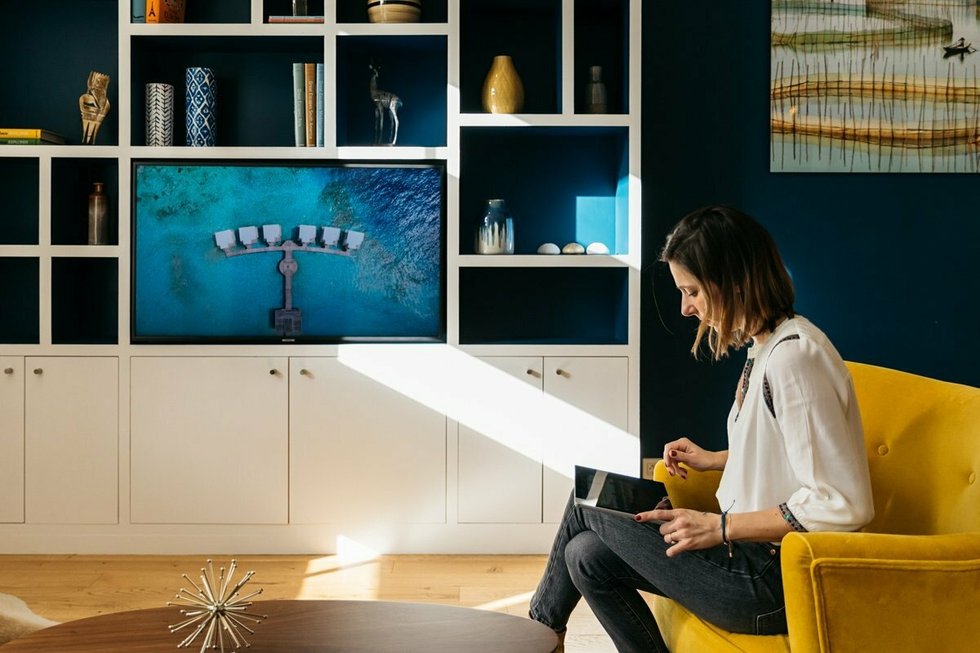A practical guide to hybrid working
Feb 08, 2022
5 mins


Imagine a parallel universe in which the pandemic hadn’t occurred, where things had followed their natural course, where digitalization hadn’t been forced upon us and where WFH had been implemented calmly and gradually. Now imagine a world where we’d had training so we could be employed with proper flexibility and where laws allowed us to decide not only if we wanted to work remotely but how much. Despite the fact that we can’t generalize in a professional ecosystem where small, medium and large companies coexist, and where employers see job profiles and backgrounds converge—whether that’s newcomers, seniors, singles, married people, parents—everyone should be free to find the right balance, depending on where they are in life.
The biggest problem we witnessed during lockdown was that anything that is imposed on us often ends up polarizing opinions. There are people who wanted to work remotely and now long to return to the office, and there are those who have realized how absurd it is to waste two hours a day commuting just to do a job you could simply do at home. The reality is simple: although we might have thought we’d made progress, we’re actually back at square one.
Yes, we’ve trialed something that most managers were against. Yes, we know the situation is untenable if we’re managing people. And yes, some people have moved to Bali and continue to bring enormous value to their teams. But if we really look closely at all of this, we realize it has merely been an interlude: a period where we’ve seen how our lives could be. Since then, we’ve returned (pretty much across the board) to where we were in March 2020. But this should at least give us an opportunity to plan using criteria that we didn’t have two years ago—and, at long last, embark on a transition toward a new hybrid work model.
Are we ready for the hybrid model?
There will always be people who want to see the sea as they open up their laptop. And others who need the routine of going to an office. And others who want a physical space for socializing and a virtual space in which to be more efficient. On the whole, we’re not ready for fully remote working. Or at least not the majority of us. And although a section of society would opt for this system, these people need to be aware that to do it properly, a number of steps are necessary.
Let’s start at the beginning. Strategically speaking, the first step relates to employers, who need to decide how they want to distribute the work: who can and cannot work remotely; who wants to and who doesn’t. This is crucial because there will be some people who, despite having the choice, would prefer not to; as well as those who would like to but don’t have the right skills.
Once this first step has been tackled, we come up against the second: workers need training. Most of us have picked up skills related to remote working over the past two years (we’ve learned how to use Zoom and Teams, we might communicate over Slack, we’ve stopped replying to messages immediately in order to focus first on other tasks, we’re trying to have fewer meetings), but it’s surprising how many people still claim they’re unable to manage their time. However, by implementing a series of small changes over the course of a week, everyone’s view changes radically.
Different work spaces for different tasks
Santiago García, founder of the Future for Work Institute, has laid the foundations for hybrid working: “With a model such as this, it’s important for remote working to be voluntary.” The ratio between on site and remote working needn’t be the same for every team. You can have companies with some teams working 100% on site, others 100% remotely, and others working in a hybrid way.
However, this ability to choose is not available to all workers, as there are still companies that set a fixed schedule (for example, three days at home and two in the office). That’s why García recommends the office should be used “for doing different things to those that are done outside it. And the office shouldn’t be a place where team members go to talk about things that are better discussed face to face, because that can be done in a co-working space or in a bar.”
Over the past three years, more than 3,000 monthly surveys have been conducted on employees between the ages of 20 and 64 at Stanford University, the University of Chicago and the Mexico Autonomous Institute of Technology. The results show that most workers who choose the hybrid format prefer to have two days a week at home and three in the office.
According to José Manuel Berná, head of marketing and communication at Vygon Spain, a multinational pharmaceutical company that has been fostering work-life balance and flexitime for years, the key to adopting this hybrid format lies in differentiating between working together and working individually. The latter can be done at home on tasks that can be assessed, while group work can be done both at home and in the office. According to this model, the office should be kept for:
Tasks that can’t be done at home due to materials or a space that can only be accessed at the company’s physical offices.
Creative meetings. In other words, any meeting that seeks to design new solutions for a specific issue or a change in strategy. The dynamics of office meetings tend to be better than online ones and allow people to participate in a way that’s more efficient.
Social gatherings. Humans need contact with others to feel part of a team. This has recently led to more opportunities for workers to meet up outside the workplace at informal get-togethers.
Discover your own pace
According to data from the latest study by WFH Research, the productivity of those working remotely has risen from 5% (2021) to 8% (2022). A better understanding of digital tools and adapting to the recent circumstances are thought to be key factors here.
And although each company, manager and worker is different and requires a different approach to the hybrid model, there is clear evidence on how to be productive:
Get training. Not just with digital tools but also in managing teams and strategies for working together. We are increasingly heading towards a world in which we will do very different tasks throughout our careers. And the more skills we acquire, the better placed we will be to advance professionally.
Start by designing a timetable for all your tasks—all the way from sitting down at your laptop to going for a run, or even watching TV. As you become more familiar with your timetable, you will get better at being more flexible with your workday.
Define, ideally in writing, what you’ll do at the office and what you’ll do at home. This way, your colleagues will have no doubts about when they can and can’t rely on you for something.
Set out a few hours a day for being online along with the rest of the team, as well as time for concentrating on your tasks and deep work. You will soon realize how much work you can get done in a day when there are no interruptions.
Don’t feel obliged to respond immediately to emails or any form of instant messaging. Anyone with a pressing issue will find another way of contacting you and no one will get upset if they don’t get an instant response.
Exercise and get outdoors even when you’re working from home. Our minds work differently when they’re not concentrating on a screen all day.
Spend time with people other than your colleagues. This will help you get a different perspective on your sector, as well as on ways of coping with life and organizing your work.
Always report back on whatever you’re doing when you’re not at the office. This way, there will always be a record of the progress you’re making.
Evaluate your way of life over the coming year: once you’re able to work efficiently with the hybrid model, you can start considering whether you’d prefer to keep it or increase the number of days you work remotely.
Photo: Welcome to the Jungle
Follow Welcome to the Jungle on Facebook on LinkedIn and on Instagram and subscribe to our newsletter to get our latest articles every day!

More inspiration: David Blay
Journalist, consultant in teleworking, lecturer and podcast host.

Can Moneyball help inspire a new era for human resources?
Let’s begin with two rather unusual starting points for these types of articles, both linked to the world of sport...
Jan 18, 2024

Stop buying and start living lightly – and remotely
It's no secret that the younger generation lacks the financial security that their parents enjoyed, so how can they adapt?
Oct 19, 2023

Is remote work the start of a new class struggle?
Flexible work is becoming an essential job perk, but where does that leave all the essential workers?
Jul 05, 2023

Are you too anxious to be a digital nomad?
Working from the peace and quiet of a Californian beach town may sound like just the change you need, but does it work for everyone?
Nov 08, 2022

WFH works—until you need to take time off
Studies have shown that people working from home have a tendency to prolong their working day. We feel guilty for “abandoning” our tasks...
Mar 29, 2022
The newsletter that does the job
Want to keep up with the latest articles? Twice a week you can receive stories, jobs, and tips in your inbox.

Looking for your next job?
Over 200,000 people have found a job with Welcome to the Jungle.
Explore jobs